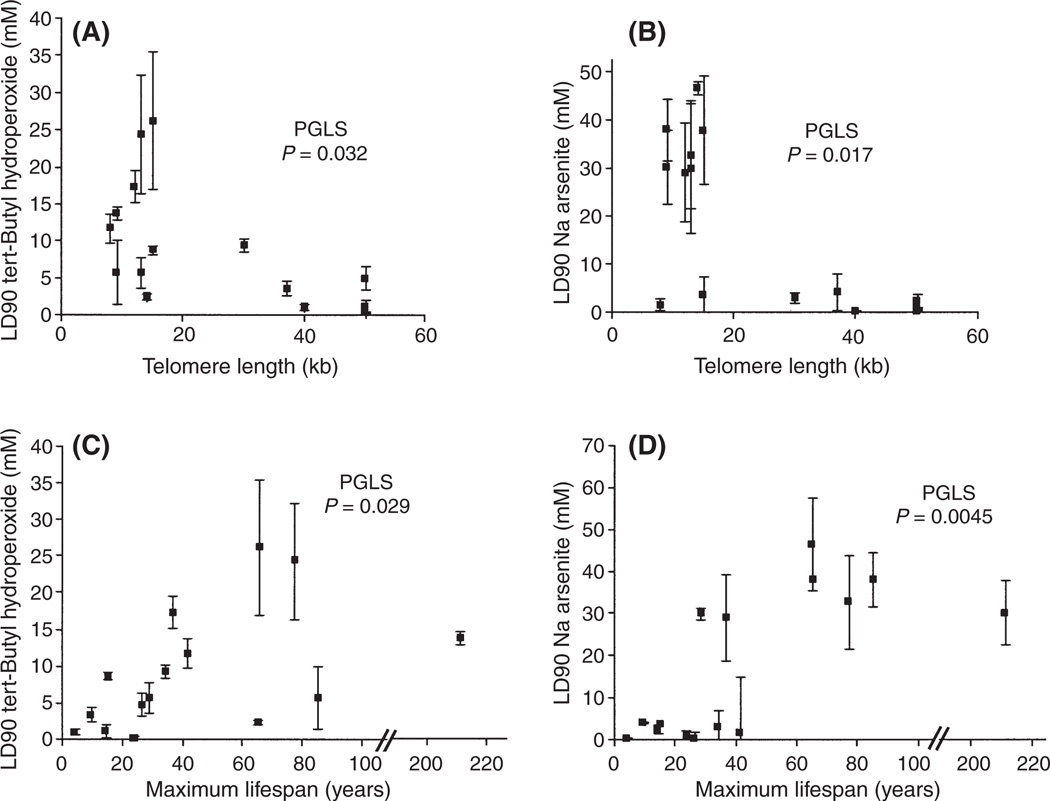Fig. 5.
Resistance to tert-butyl hydroperoxide and sodium arsenite. The LD90 of a 4-h treatment with different oxidative damage-inducing agents was examined for 15 different species. Data are shown for telomere length (A and B), maximum lifespan (C and D), tert-butyl hydroperoxide (A and C), and sodium arsenite (B and D). Phylogenetic generalized least squares (PGLS) analysis demonstrates that resistance is significantly associated with telomere length independent of the effects on lifespan or mass. Virtually identical patterns are observed if plotted against body mass (data not shown) instead of lifespan. Table S3 (Supporting Information) gives the actual values for the specific species analyzed. ±SEM of 2–6 titration curves.

